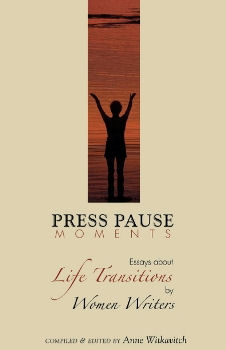
Adele Annesi is an award-winning editor and writer. She was a development editor for Scholastic, and is now a book editor specializing in business, culture and memoir. Her columns, reviews and stories appear in blogs, newspapers, magazines and literary journals, including 34th Parallel, The Fairfield Review, Hotmetalpress, Marco Polo Quarterly, Miranda Literary Magazine, The Pittsburgh Quarterly, Southern Literary Review and Tertulia. Her "After the Sunflowers" essay is part of Press Pause Moments: Essays About Life Transitions by Women Writers . Adele conducts workshops for libraries and other venues. She is currently working on a novel and a series of short stories. Visit her award-winning editing blog for writers, Word for Words , and her online workshop at Adele M. Annesi . |
Flat Screen, Flat Scene: The Role of Tension and Conflict |
|
I recently read a scene in the first draft of a novel where a thirtieth-birthday dinner was to end in conflict. It didn’t. The scene was well-written, but the encounter was flat as a newly tarred driveway. Why? No tension. A scene can lack tension for various reasons. In this case, none of the characters was allowed to react when the protagonist is unexpectedly reminded that he was away on business while his wife lay dying. Actually, in this example, it’s more accurate to say the reactions were muted. The lukewarm response dulled the scene and made the characters one-dimensional. The result: no character development and no story progression. And that’s what scenes are meant to do—reveal character and advance plot, preferably both at once. Another reason for this scene’s lack of tension was that even the protagonist’s emotions were subdued. What did he really feel? How would he show his emotions? How would others respond to his pain, including his daughter-in-law, whose birthday they were celebrating? What about the man’s date: Would her empathy be thwarted because his guilt feelings prevent him from accepting love? What about the man’s son: Is he angry with his father for failing to be at his mother’s side? Since the son is a doctor and couldn’t stand to see her in pain, did he aid her passing? Because the scene is weak, it can’t form a foundation for any of these wonderful possibilities. First-time novelists—and those with some success—often fear tension because it creates conflict, and conflict makes things messy. Scenes get chaotic, characters become complicated, and the story can feel like it’s spiraling out of control. First drafts are especially ripe for such difficulties. Yet, a first draft is exactly the place for a mess. That’s where writers get to know their characters and where a plot can grow organically beyond a one-dimensional initial try to become a layered work with a subplot or two for depth and breadth. And, keep in mind, it’s usually easier to edit a larger-than-life scene—or first draft—than to infuse life into one that’s moribund. Another reason tension is important is that under pressure—real or imagined, external or internal—people reveal themselves for what they are or are not. The very fact that there’s a difference confirms that some people respond extravagantly and some with restraint, with every variation in between. But the writer must take conscious responsibility for how her people react in tense situations. A scene’s outcome can’t occur by default because the writer failed to develop the characters; readers will instinctively know the difference between an intentionally subtle encounter and one in which the writer simply failed to follow through. An unseasoned pot roast may look appealing, but one taste will tell.
What’s the cure for a lifeless scene? This is one instance where the best approach is to start fresh—with a new page—and close your eyes. Then do what Natalie Goldberg described in Writing Down the Bones as re-visualizing or re-visioning the scene, literally |
seeing it anew and watching it develop. In our thirtieth-birthday dinner example, what really happens when an old colleague happens by and congratulates the protagonist on his business savvy, then says, “Too bad about your wife, though. You must miss her”? How does everyone respond, especially the man who has never resolved his sense of guilt? Imagining a scene is also what Stephen King describes in “Use Imagery to Bring Your Story to Life” in the August 2010 issue of The Writer (also see my blog post “Stephen King to the Rescue” . Close your eyes and watch the scene materialize in your imagination; see how each person responds. Then describe what you see. This technique will enrich the story and characters. It will also give you a chance to get to know your characters sooner rather than later, thus laying the foundation for well-developed characters and a satisfying story. When you go back to edit in draft two, keep in mind that well-written tension builds evenly, not necessarily neatly, but progressively. So watch the arc of your story and the development of its characters. In the case above, the lack of tension—evidenced in the characters’ universal lack of response—drained the life from story and characters alike. Yet, stories and people long to escape the confines writers sometimes set, so take the time to re-envision the scene, then write the reality you see. It will set you and your writing free. To pose an editing query, contact Adele Annesi, a.annesi@sbcglobal.net, or visit my online workshop. Press Pause Moments: Essays About Life Transitions by Women Writers .  |








